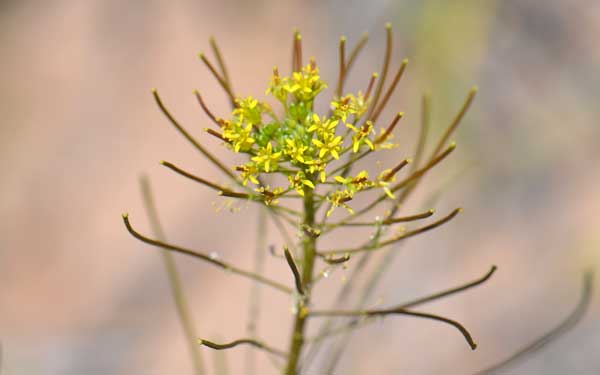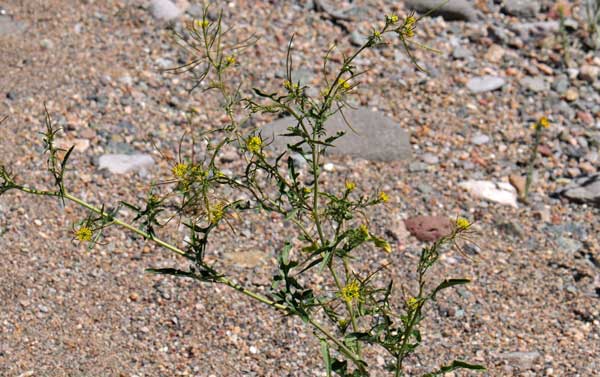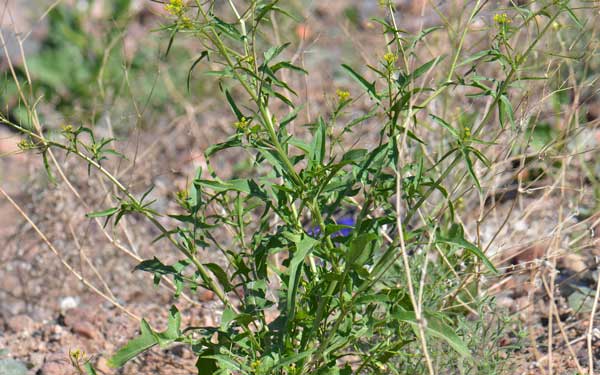Sisymbrium irio, London Rocket




Scientific Name: Sisymbrium irio
Common Name: London Rocket
Also Called: Rocket Mustard, Tumble Mustard; (Spanish: Mostaza, Pamita)
Family: Brassicaceae, Mustard Family
Synonyms: (Norta irio)
Status: Introduced from Europe.
Duration: Annual
Size: Up to 2 feet or more.
Growth Form: Forb/herb; erect or leaning, multiple branching, stems slender, green
Leaves: Green; variable, basal and stem leaves, basal leaves up to 6 inches, lobed or dissected, stem leaves linear or oblong, with petioles or sessile, glaucous and nearly hairless.
Flower Color: Yellow, pale yellow; flowers small in small clusters on tips of branches, 4 petals, 4 sepals, fruit a slender round pod the length is more than 3 times the width (silique).
Flowering Season: Early spring.
Elevation: Below 4,500 feet.
Habitat Preferences: Irrigated areas, open fields, disturbed areas and desert landscapes.
Recorded Range: London Rocket is found in the southwest and in the states surrounding the Great Lakes. It also occurs in South Carolina and Florida. Introduced in Baja California, northern Mexico, South America and Australia.
North America & US County Distribution Map for Sisymbrium irio.
U.S. Weed Information: Sisymbrium irio is listed in: Weeds of the United States and Canada, and Weeds of the West. Plants included here may become weedy or invasive.
Invasive/Noxious Weed Information: No data available.
Wetland Indicator: No data available.
Threatened/Endangered Information: No data available.
Comments: London Rocket is an aggressive weed in Arizona and elsewhere, but quickly dies out when the hot temperatures arrive. The plant responds well after fire, and its abundance and rapid growth following the Great Fire of London in the 1600’s resulted in its common name, London Rockets.
Several ethno-botanical uses have been identified for London Rocket, uses include use of the dried seeds which were placed under the lids of sore eyes to cause weeping also, the immature leaves were boiled or fried and used for greens. See a full species account from Native American Ethnobotany, University of Michigan, Dearborn.

